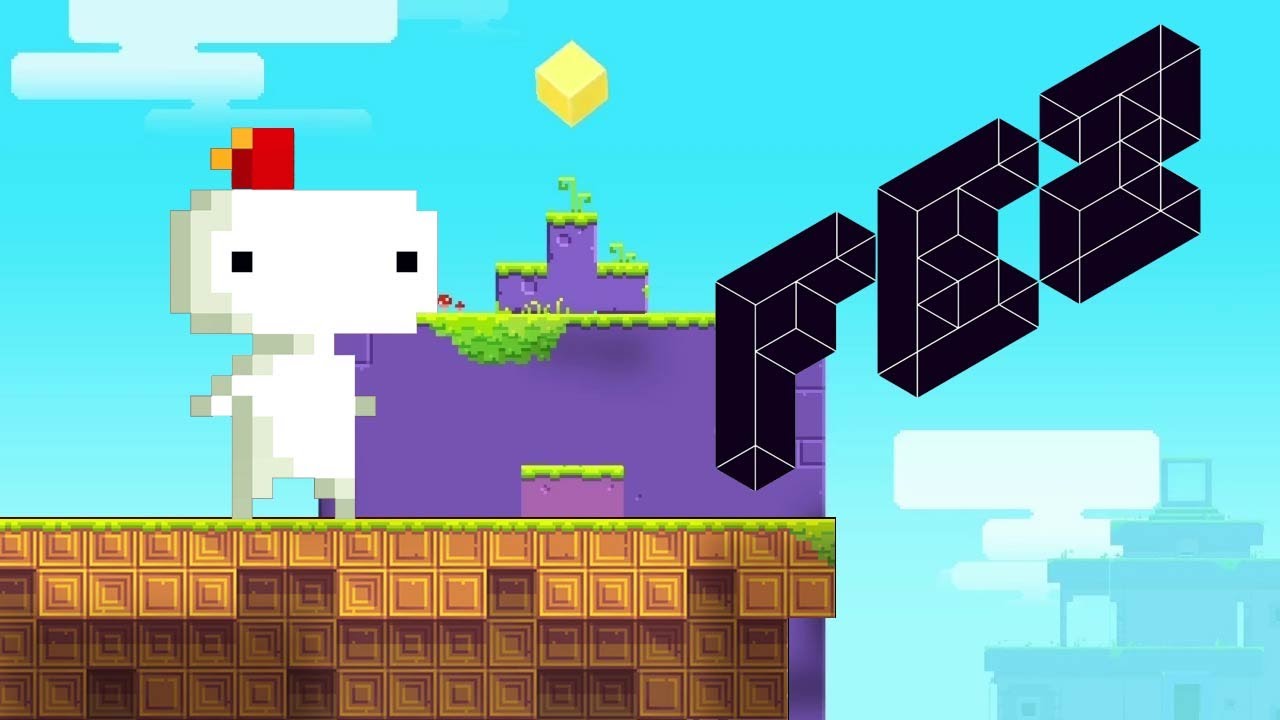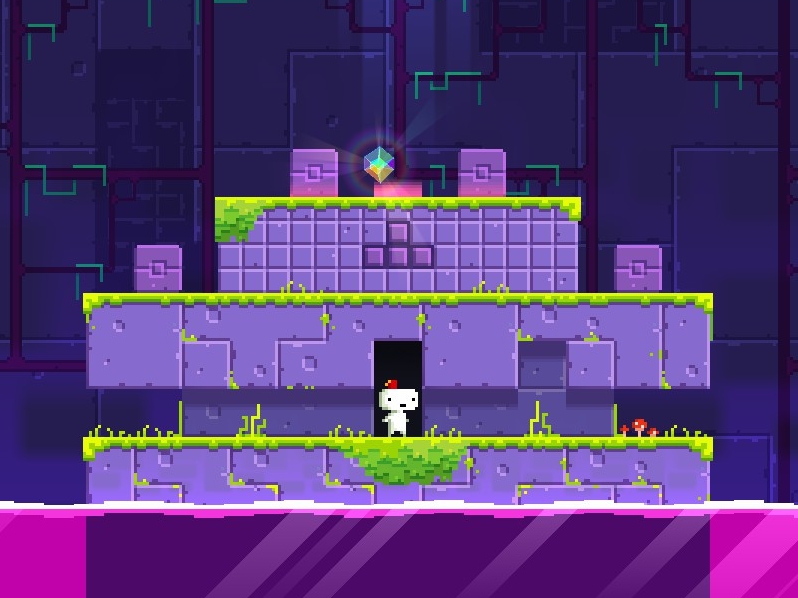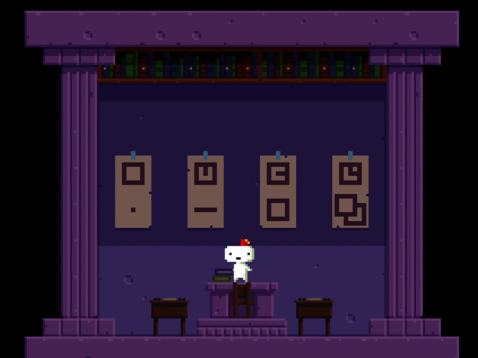
2015: Fez
Fez
Release Date Developer Publisher 1 May 2013 (PC) Polytron Corporation Trapdoor
Despite some of the controversy around the release of the game and cancellation of the sequel, Fez caught my eye due to it’s novel, hybrid 2D / 3D technology, cryptic puzzles, and player-driven exploration and discovery. While completionists may be taken aback by how extremely detailed and arcane the solutions to certain puzzles are, the game allows players with a variety of experience to reach a satisfying ending.
Some added context, for those who haven’t played (spoilers abound!): Fez is a puzzle-platformer with a front-loaded focus on platforming and a back-loaded focus on puzzling. Players explore a detailed, 2D, pixel world using the protagonist’s ability to “rotate” the map between four “sides” of a 3D cube to change the location and orientation of platforms, secrets, or even the player.
The goal is to collect 32 cubes which will fuse together to fix the “glitch” that gave the protagonist, Gomez, the ability to rotate the world in the first place. However, while collecting 32 cubes is enough to beat the game, there is another set of 32 cubes, called anti-cubes, which are more difficult to find.
Realistically, anyone who beats the game will likely discover a few anti-cubes along the way, leaving some loose ends to explore further. This sort of scaling difficulty is what makes an esoteric game like Fez appeal to a wider audience: some will finish the game and call it there, while others will be intrigued by the anti-cubes and explore the depths of the game.
And there’s a lot of depth. The game itself has two distinct languages that the player must decode to solve puzzles. The first is more straightforward: A series of tetrominos which instruct the player to perform specific inputs (e.g. Up, Down, A, and B).
 |  |
|---|
Players looking to uncover all of the secrets of Fez must learn to decode both the Tetromino symbols (left) and the Zu language (right).
The other language, referred to as “Zu”, is effectively a Dingbat font, where traditional, alphabet characters are replaced by symbols. The player can, over the course of the game, find rooms that clue them into the real letters associated with each symbol. From there, decoding messages just takes some pen, paper, and the discovered translations.
By its conclusion, players will feel Fez evolve from an exploratory platforming game, with lots of fresh ideas due to the 2D-3D mechanics, to an enigmatic puzzler, detailed enough to require handwritten notes. While other indie platformers like Braid or Celeste capture one side of the formula, it’s rare to see a game excel in multiple fields.